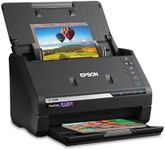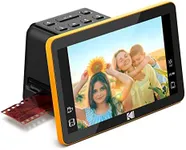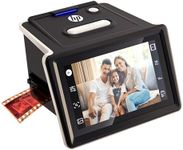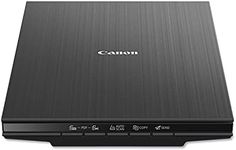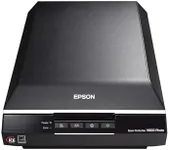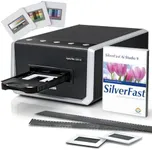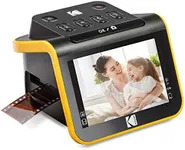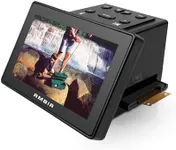Buying Guide for the Best Slide And Negative Scanners
When choosing a slide-and-negative scanner, it's important to consider several key specifications to ensure you get the best fit for your needs. These devices are designed to convert your old slides and negatives into digital format, preserving your memories and making them easier to share and store. Understanding the key features will help you make an informed decision and select a scanner that meets your requirements.ResolutionResolution is measured in dots per inch (DPI) and determines the level of detail the scanner can capture. Higher resolution means more detail and larger file sizes. For general use, a resolution of 2400 DPI is usually sufficient. If you need to capture very fine details or plan to print large photos, look for a scanner with 4000 DPI or higher. Consider your end use: for web sharing and small prints, lower DPI is fine; for archiving and large prints, higher DPI is better.
Color DepthColor depth, measured in bits, indicates how many colors the scanner can capture. Higher color depth means more accurate and vibrant colors. Most scanners offer 24-bit color depth, which is adequate for most users. However, if you need professional-quality scans with the most accurate color reproduction, look for a scanner with 48-bit color depth. Think about how important color accuracy is for your projects when choosing the color depth.
Dynamic RangeDynamic range, often represented as Dmax, measures the scanner's ability to capture the range of light and dark areas in an image. A higher Dmax value means better detail in shadows and highlights. For general use, a Dmax of 3.0 is sufficient. For professional use or if you have slides and negatives with a lot of contrast, look for a Dmax of 4.0 or higher. Consider the quality and contrast of your originals when evaluating dynamic range.
Scanning SpeedScanning speed refers to how quickly the scanner can digitize your slides and negatives. Faster scanning speeds can save you time, especially if you have a large collection to digitize. Entry-level scanners may take a minute or more per scan, while higher-end models can scan in seconds. If you have a large volume of slides and negatives, prioritize a scanner with faster speeds to make the process more efficient.
Software and CompatibilityThe software that comes with the scanner can greatly affect your experience. Good software can make it easier to edit, organize, and share your scans. Ensure the scanner is compatible with your computer's operating system. Some scanners come with advanced software for dust and scratch removal, color correction, and other enhancements. Consider what features you need and check the software capabilities and compatibility before making a decision.
ConnectivityConnectivity options determine how you connect the scanner to your computer or other devices. Most scanners use USB connections, but some may offer wireless options. USB 3.0 provides faster data transfer than USB 2.0. If you prefer a wireless setup, look for scanners with Wi-Fi capabilities. Think about your workspace setup and how you prefer to connect your devices when choosing the connectivity options.
Size and PortabilityThe size and portability of the scanner can be important if you have limited space or need to move the scanner frequently. Compact and portable scanners are easier to store and transport but may have fewer features. Larger scanners often offer more advanced features and better performance. Consider your space constraints and how often you need to move the scanner when deciding on the size and portability.
